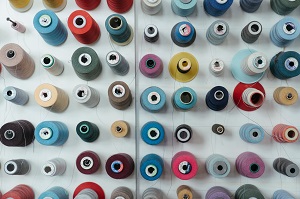How to Control Neps in Yarn

Neps are small knots or clusters of fibers that can form in yarn during the spinning process. They can have a negative impact on the quality and appearance of the finished textile product. Here are some ways to control neps in yarn:
- Proper Fiber Selection:
The selection of high-quality fibers is important to minimize the occurrence of neps in yarn. Fibers that are too short or have a high degree of fiber entanglement are more likely to form neps.
- Proper Cleaning and Blending:
Proper cleaning and blending of fibers can help to remove any impurities or debris that can contribute to neps.
- Proper Spinning Conditions:
Proper spinning conditions, such as temperature and humidity, can help to minimize the occurrence of neps in yarn. Spinning at a consistent speed and tension can also help to reduce neps.
- Regular Equipment Maintenance:
Regular maintenance of spinning equipment is important to ensure that it is functioning properly and to identify and address any issues that may be contributing to neps.
- Yarn Testing: Regular testing of the yarn can help to identify and address any neps. This can be done using tools such as a yarn nep tester or a fabric inspector.
Types of Neps in Yarn
- Seed Neps:
During the spinning process, fibers can trap pieces of plant matter or seed, forming small knots known as seed neps in the yarn.
- Trash Neps:
Trash neps are small knots that form when pieces of debris, such as leaves or stems, are trapped in the fibers during the spinning process.
- Fly Neps:
During the spinning process, short fibers, known as “fly,” trap and form small knots, resulting in fly neps in the yarn.
Overall, controlling neps in yarn requires attention to detail and a focus on producing high-quality yarn. Spinners can produce yarn with fewer neps, resulting in a better-quality finished product with these tips.
